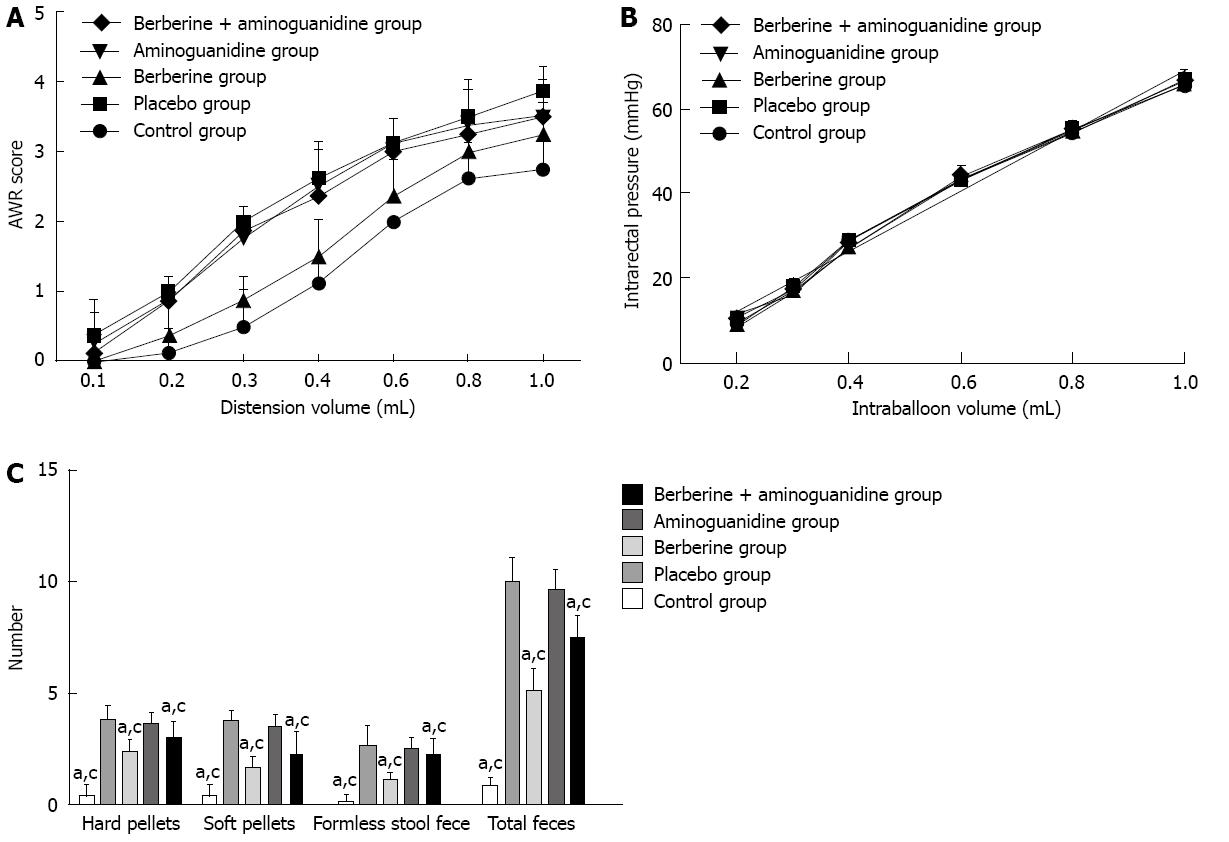Copyright
©2013 Baishideng Publishing Group Co.
World J Gastroenterol. Jul 28, 2013; 19(28): 4582-4589
Published online Jul 28, 2013. doi: 10.3748/wjg.v19.i28.4582
Published online Jul 28, 2013. doi: 10.3748/wjg.v19.i28.4582
Figure 1 Photomicrographs (hematoxylin and eosin stain, × 100) of distal colon at 2 and 7 d, respectively.
A, B: Control group; C, D: Placebo group; E, F: Berberine group; G, H: Aminoguanidine group; I, J: Berberine + aminoguanidine group. At 2 d, histological inflammatory features including mucosal hemorrhage, submucosal edema, and inflammatory infiltration in the lamina propria and the submucosa were observed in the placebo, berberine, aminoguanidine, and berberine + aminoguanidine groups (A, C, E, G, I). At 7 d, there was no marked inflammatory feature compared with the control group (B, D, F, H, J).
Figure 2 Summarized plots.
A: Colorectal distension-induced abdominal withdrawal reflex (AWR) in each group. Comparing the berberine and placebo groups, the AWR scores were reduced at all distension volumes and were significant at 0.2-1.0 mL. The AWR score in the berberine group was significantly lower than in the aminoguanidine and berberine + aminoguanidine groups; B: The relationship between intraballoon volume and intrarectal pressure in each group. The distension volume from 0.2 to 1.0 mL and the corresponding intrarectal pressure were plotted for regression analysis. Intrarectal pressure was linearly increased as the balloon was inflated. The fitted functions of the five groups were not significantly different; C: Restraint-stress-induced defecation in each group. Defecation in the placebo and aminoguanidine groups was significantly more frequent than in the control, berberine and berberine + aminoguanidine groups (aP < 0.05 vs placebo group; cP < 0.05 vs aminoguanidine group). The berberine and berberine + aminoguanidine groups showed reduced defecation, but aminoguanidine group alone did not effectively reduce defecation.
- Citation: Tang QL, Lai ML, Zhong YF, Wang AM, Su JK, Zhang MQ. Antinociceptive effect of berberine on visceral hypersensitivity in rats. World J Gastroenterol 2013; 19(28): 4582-4589
- URL: https://www.wjgnet.com/1007-9327/full/v19/i28/4582.htm
- DOI: https://dx.doi.org/10.3748/wjg.v19.i28.4582










